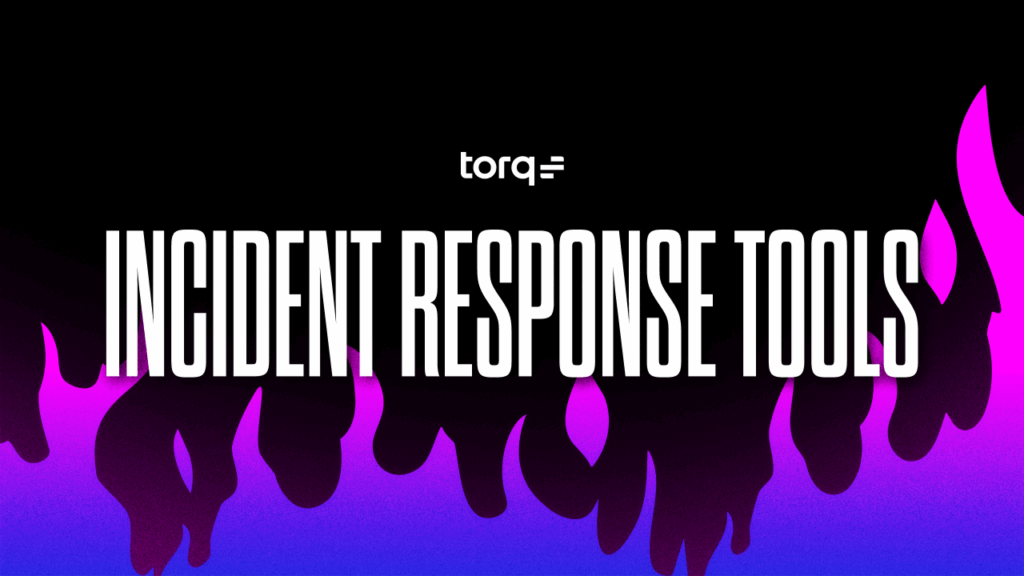Contents
Get a Personalized Demo
See how Torq harnesses AI in your SOC to detect, prioritize, and respond to threats faster.
Phishing attacks are no longer generic ‘spray and pray’ — they’re precision-engineered. With the rise of AI-generated content, attackers are crafting highly personalized emails that mirror real internal communication, complete with tone, context, and believable urgency. Whether it’s an HR request targeting a new hire or a fake wire transfer email impersonating your CFO, today’s phishing attacks are custom-built to manipulate individuals, not just inboxes.
That’s why understanding the differences between types of phishing — especially spear phishing vs. a whaling phishing attack — is crucial. The more personalized the attack, the higher the stakes. And the more manual your detection and response, the slower (and riskier) your SOC becomes.
What is Spear Phishing?
Spear phishing is a highly targeted cyberattack aimed at a specific individual or organization, setting it apart from generic, mass phishing. Attackers research their targets to craft customized and convincing messages, often leveraging publicly available information from social media and company websites, such as personal names, roles, recent activity, or inside information, to build trust
Highly Targeted Emails with Personal Details
Spear phishing messages may reference the recipient’s name, job title, or company-specific context to make them more believable and reduce suspicion.
Uses Social Engineering to Build Trust
Spear phishing attackers often impersonate trusted internal figures like IT, HR, or team leads and may use emotional manipulation tactics and a false sense of urgency, such as “I need these gift card codes ASAP for a client!” to coax users to click or respond quickly without taking time to verify the legitimacy of the request.
Common Goals: Credential Theft, Malware Delivery, Account Access
Most spear phishing campaigns are designed to either trick users into revealing login credentials, installing malware, or granting access to sensitive systems — all while flying under the radar of traditional defenses.
What is Whaling?
A whaling phishing attack is a high-stakes subcategory of spear-phishing that specifically targets or impersonates high-level executives, such as CEOs, CFOs, or General Counsel. These “big fish” are chosen due to their significant access to critical data and financial assets, promising a substantial payoff for attackers.
CEO/CFO/General Counsel Impersonation or Targeting
Whaling attackers focus on top executives or impersonate them to pressure subordinates.
A common whaling tactic cybercriminals use is to mimic the writing style of a CEO or CFO in emails or texts to executive assistants, finance staff, or vendors. Attackers may scrape public communications like press releases or LinkedIn profiles to make these messages feel authentic.
Usually Involves High-Value Requests: Wire Transfers, Sensitive Data
Whaling often centers around urgent financial transactions such as wire transfers of large sums of money, highly sensitive corporate data such as confidential M&A documents, or login credentials to critical systems — anything that can cause maximum damage if mishandled.
Tactics Include Urgency, Authority, and Spoofed Domains
Whaling attackers employ sophisticated tactics, including urgency, authority, and spoofed domains and emails, to pressure targets into immediate action without suspicion. They might use subtle misspellings in domain names or mimic corporate logos to enhance credibility, making these attacks particularly challenging to detect.
Spear Phishing vs. Whaling: Key Differences
Here’s how spear phishing and whaling compare head-to-head.
| Spear Phishing | Whaling | |
|---|---|---|
| Target Audience | Any employee | Executives (CEO, CFO, General Counsel) |
| Payload & Objectives | Steal login credentials, access accounts, deliver malware | Initiate wire transfers, steal confidential data |
| Level of Personalization | High: includes personal/company context | Very high: mimics executive language/tone |
| Potential business Impact | Medium to high: data loss, lateral movement | Extremely high: Catastrophic financial loss, compliance risk, reputational damage |
5 Ways to Detect and Prevent Spear Phishing and Whaling Attacks
Security teams can implement several layered defenses, but they won’t scale without security automation. Here’s what works.
1. Employee and Executive Phishing Awareness Training
Because spear phishing and whaling rely on social engineering and psychological manipulation, your people are your most important line of defense. Use mock phishing exercises to teach employees how to recognize impersonation, suspicious links, and pressure tactics. Executive-specific training should highlight whaling phishing threats.
2. Email Authentication (DMARC, SPF, DKIM)
Implementing email authentication protocols (e.g., DMARC, SPF, DKIM) is fundamental. These protocols help verify the legitimacy of email senders, making it much harder for attackers to spoof domains. Automation can be used to continuously monitor and enforce these policies, automatically flagging or blocking non-compliant emails at the gateway.
3. Suspicious Email Flagging and Sandboxing
Security automation platforms can automatically analyze incoming emails for suspicious links or attachments, detonate them in a secure sandbox environment to observe their behavior, and quarantine the original email if malicious activity is detected.
4. AI-Powered Phishing Detection Tools
AI-powered phishing detection can instantly analyze various email attributes — content, sender behavior, and metadata — to identify anomalies and patterns that indicate phishing. Automated workflows can then triage these alerts, escalating confirmed threats for immediate response.
5. Workflow-Based Phishing Response Automation with Hyperautomation
By orchestrating security tools across the entire environment, Torq Hyperautomation™ can automatically take action upon detecting a phishing attempt, such as blocking the sender, removing malicious emails from all inboxes, resetting compromised login credentials, and isolating affected endpoints — all at machine speed.
How Phishing Attempts Lead to SOC Burnout and Alert Fatigue
Let’s be blunt: phishing is killing SOC productivity.
Due to its sheer volume, phishing is one of the largest categories of alerts in most SOCs. Thanks to the increasing sophistication of phishing attempts, even false positives can require careful scrutiny. Analysts are stuck performing the same tedious phishing triage tasks over and over — decoding headers, extracting IOCs, checking against threat feeds, and drafting user responses.
This overload is unsustainable. It leads to alert fatigue, burnout, and missed threats. So what’s the solution?
How Torq Detects and Eliminates All Phishing Threats
Torq Hyperautomation eliminates the manual phishing grind by automating the entire phishing response lifecycle. Crucially, for high-stakes attacks like spear phishing and whaling, Torq:
- Detects anomalies in email traffic by ingesting data from various sources, identifying unusual patterns in sender behavior, email content, and attachment types that may indicate a malicious attempt.
- Connects with email security tools to block threats, orchestrating actions with Secure Email Gateway (SEG) providers like Abnormal Security, Microsoft, and Proofpoint to quarantine or remove malicious emails before they reach end users.
- Automates incident response, ensuring that confirmed phishing attempts trigger immediate, predefined workflows, including isolating compromised accounts, initiating endpoint scans, and resetting credentials.
- Streamlines reporting, providing a consolidated view of phishing threats and incidents and enhancing overall security posture with actionable insights.
- Routes high-risk cases (like whaling attempts) to appropriate decision-makers instantly, ensuring that executive-level threats receive immediate attention and rapid, informed responses.
Hyperautomate Your Phishing Defenses
Spear phishing and whaling attacks are getting more convincing by the day, and can have devastating consequences. With Torq, your security team can cut through the noise of phishing attempts, automate rapid detection and response, and provide robust protection for even your highest-value targets. Stop chasing phishing attempts manually and start crushing them with machine speed, consistency, and precision.
Ready to build a more efficient, effective SOC to defend against modern threats?
FAQs
Yes, whaling is a subcategory of phishing, specifically a more advanced and targeted form of spear phishing.
Phishing is a broad, untargeted cyberattack that uses generic messages to deceive a wide audience into revealing sensitive information. Spear phishing, on the other hand, is a highly targeted attack customized for specific individuals or organizations, making it more personalized and convincing.
Spear phishing attacks can target any employee within an organization. In comparison, whaling focuses on top executives.
The primary goal of a spear phishing attack is to steal confidential information, such as login credentials or financial details, or to deliver malware to the target’s system.
An example of a spear phishing attack is an email sent to an HR staffer, appearing to be from the CEO, urgently requesting employee payroll information, which then leads to the leaking of that data.
Spear phishing and whaling both rely on social engineering techniques and share the objective of stealing sensitive information or gaining access to critical accounts or systems.
The four common types of phishing are phishing, spear phishing, whaling, and smishing (SMS phishing). Vishing (voice phishing) is also often included as a fifth.
Clone phishing involves creating a near-identical copy of a legitimate, previously delivered email, but with malicious links or attachments. Spear phishing, while also highly targeted, focuses on crafting a new, personalized message from scratch based on extensive research of the target, rather than replicating an existing email.
One of the best real-life examples of spear phishing or whaling involves an attacker posing as the CEO of Snapchat, who targeted an HR staffer, resulting in the leakage of payroll and other employee information.






